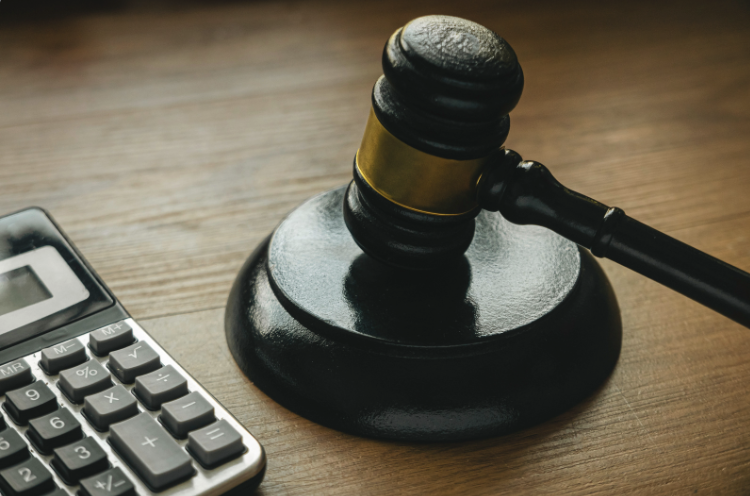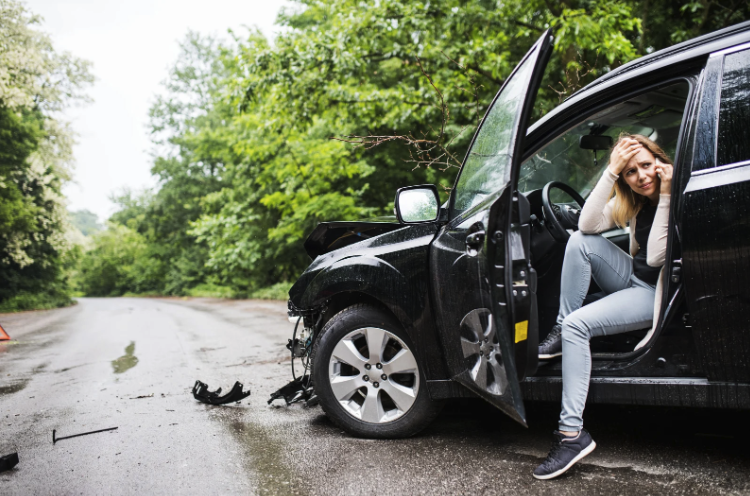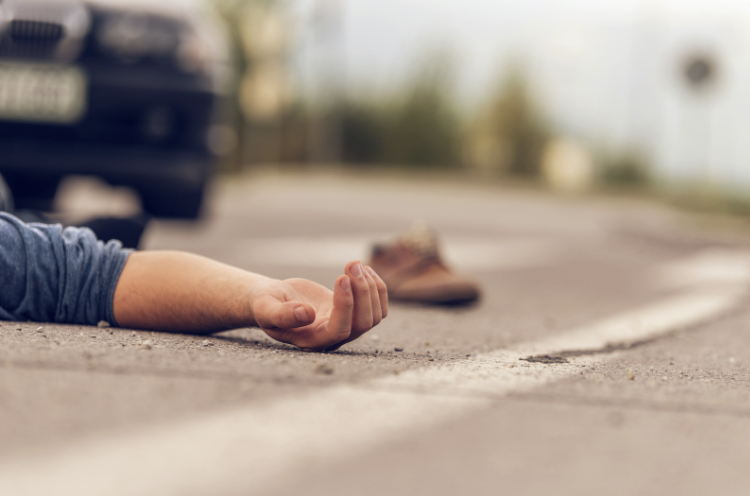When it comes to road safety, Michigan takes a stern approach, especially concerning hit and run incidents where no injuries are reported. Despite the absence of physical injuries, the legal consequences remain severe, reflecting the state’s commitment to responsible driving and accountability. This article delves into the nuances of the penalties for hit and run with no injuries in Michigan, examining everything from legal definitions to the steps one should take if involved in such an incident.
Hit and Run Michigan: What It Means
A hit and run in Michigan refers to the act of being involved in a vehicular accident and then leaving the scene without identifying oneself to the other party or the authorities. This can include collisions with another vehicle, a pedestrian, or even property. Under Michigan law, failing to stop and report such an incident can lead to significant penalties, even if no one is injured.
Immediate Stop
After being involved in a vehicular accident in Michigan, it is imperative that the driver stops immediately at the scene. This action is mandated by Michigan law to ensure the proper handling of the situation and to fulfill legal obligations.
- Legal Requirement: Michigan law stipulates that drivers must stop at the scene of an accident, whether it involves another vehicle, a pedestrian, or property damage.
- Safety Considerations: Stopping immediately helps prevent further accidents and ensures the safety of all parties involved.
- Legal Consequences: Failure to stop can lead to severe penalties, including criminal charges and potential civil liability for damages.
Reporting
In Michigan, if no other party is present at the scene of the accident, the driver must promptly report the incident to the nearest police station or law enforcement agency. This reporting requirement is crucial for documenting the accident and initiating the legal process.
- Legal Obligation: Drivers are legally obligated to report accidents promptly, even if no injuries are apparent.
- Documentation: Reporting ensures that the accident is officially recorded, which can be vital for insurance claims and legal proceedings.
- Timeliness: Delays in reporting may lead to complications in determining fault and liability.
Information Exchange
Upon stopping at the scene of an accident in Michigan, drivers must exchange specific information with the other party involved, if present. This exchange of information is necessary to facilitate communication and ensure that all parties have the details needed for insurance claims and potential legal actions.
- Required Information: Drivers must provide their name, address, and vehicle registration number to the other party.
- Mutual Understanding: Exchanging information helps clarify the identities of those involved and facilitates any subsequent communications or negotiations.
- Legal Compliance: Failure to exchange required information can result in legal consequences, including fines and penalties.
Is a Hit and Run a Felony in Michigan?
The classification of a hit and run offense in Michigan depends on the severity of the incident. If the hit and run involves no injuries, it is generally treated as a misdemeanor. However, the situation escalates to a felony if the accident results in significant property damage, serious injuries, or death.
Misdemeanor
In Michigan, a hit and run offense is generally treated as a misdemeanor when it involves no injuries and minimal property damage. Misdemeanor offenses are considered less severe but still carry legal repercussions. The intent behind classifying such incidents as misdemeanors is to address minor offenses without imposing overly harsh penalties.
Table: Key Characteristics of Misdemeanor Hit and Run Offenses
| Point | Description |
| No Injuries Reported | The incident did not result in any bodily harm to individuals involved. |
| Minimal Property Damage | The damage caused to property, such as vehicles or other structures, is minor and does not require extensive repairs. |
| Potential Penalties Include Fines | Offenders may face monetary penalties that vary depending on the specifics of the incident. |
| Jail Time | Although less severe than felony charges, misdemeanors can still result in short-term imprisonment. |
| Points on Driver’s License | Accumulating points can lead to higher insurance rates and potential license suspension. |
| Increased Insurance Rates | Convictions can lead to higher premiums for auto insurance as the risk associated with the driver increases. |
Felony
A hit-and-run offense escalates to a felony in Michigan when the accident results in serious injuries, fatalities, or significant property damage. Felony charges are reserved for more severe incidents, reflecting the gravity of the harm caused. The penalties for felony hit and run offenses are stringent and can have long-lasting impacts on the offender’s life.
Table: Key Characteristics of Felony Hit and Run Offenses:
| Point | Description |
| Serious Injuries | The accident causes significant bodily harm to one or more individuals, requiring medical attention and possibly long-term care. |
| Fatalities | If the hit and run results in the death of any person involved, the offense is classified as a felony. |
| Significant Property Damage | The damage caused is extensive, often requiring major repairs or total replacement of property. |
| Severe Penalties Including Long-Term Imprisonment | Felony convictions can lead to substantial prison sentences, reflecting the seriousness of the offense. |
| Substantial Fines | Financial penalties are much higher for felony offenses, potentially amounting to thousands of dollars. |
| Permanent Criminal Record | A felony conviction remains on the offender’s record, affecting future employment opportunities, housing, and more. |
| Potential Civil Lawsuits | Victims or their families may file civil suits for damages, leading to further financial and legal repercussions for the offender. |
Penalties for Hit and Run with No Injuries in Michigan

The penalties for a hit and run with no injuries in Michigan are designed to deter drivers from leaving the scene of an accident. These penalties can vary, but they typically include fines, points on the driver’s license, and possibly jail time.
Fines
Fines for a hit and run with no injuries can be substantial, reflecting the seriousness of the offense. The financial burden imposed by these fines is intended to penalize the driver and discourage such behavior in the future. The amount of the fine can vary depending on the specific circumstances of the incident, including the extent of property damage and any aggravating factors.
- Amount: Up to $1,000, depending on the circumstances and damage involved.
- Circumstances: The specific amount of the fine can be influenced by the severity of property damage.
- Aggravating Factors: Additional factors such as prior offenses can lead to increased fines.
| Circumstance | Fine Amount |
| Minor property damage | Up to $500 |
| Moderate property damage | $500 – $800 |
| Severe property damage | Up to $1,000 |
Jail Time
In addition to fines, drivers convicted of a hit and run may face jail time. The threat of imprisonment serves as a significant deterrent and emphasizes the legal requirement to remain at the scene of an accident. The duration of the jail sentence can vary based on the specifics of the case and judicial discretion.
- Duration: Up to 1 year for misdemeanors.
- Case Specifics: The exact duration can vary based on the details of the incident.
- Judicial Discretion: Factors such as the driver’s criminal history and behavior following the accident can influence the length of the jail sentence.
| Offense Type | Jail Time |
| First-time offense | Up to 6 months |
| Repeat offense | 6 months to 1 year |
| Aggravated factors | Maximum 1 year |
License Points
Accumulating points on a driver’s license is another serious consequence of a hit-and-run with no injuries. These points can have long-term effects on a driver’s record and insurance rates. Points added to the driver’s license can lead to higher insurance premiums and increased scrutiny from insurers. Excessive points may also result in additional penalties, including the potential suspension of the driver’s license.
- Points: 6 points added to the driver’s license.
- Insurance Impact: Points can lead to higher insurance premiums.
- Additional Penalties: Excessive points may result in license suspension.
| Points on License | Consequences |
| 1-3 points | Minor impact |
| 4-6 points | Noticeable premium increase |
| 6+ points | Potential license suspension |
Legal Proceedings and Defenses
Facing a charge for a hit and run with no injuries can be a daunting experience. It’s crucial for defendants to understand the legal process and possible defenses that can be employed.
Lack of Knowledge
The lack of knowledge defense argues that the driver was unaware that an accident occurred. This defense can be particularly relevant in situations where the impact was minor or the driver had legitimate reasons for not realizing an accident took place. Successfully employing this defense requires substantial evidence to support the driver’s claim of ignorance.
- Minor Impact: The collision was so minor that it did not register with the driver. This situation often occurs in crowded parking lots or slow-moving traffic, where minor bumps are common and often unnoticed.
- Noise Level: External noise, such as loud music inside the vehicle or heavy traffic noise outside, masked the sound of the impact. Drivers might not hear a minor collision due to these distractions.
- Vehicle Condition: The vehicle had pre-existing damage, making it difficult to distinguish new damage from the accident. This is particularly relevant for older vehicles that already have dents and scratches.
- Witness Testimony: Passengers or bystanders can confirm the driver’s unawareness of the accident. This testimony can be crucial in proving that the driver genuinely did not know an accident occurred.
- Absence of Immediate Signs: No visible signs of damage or injury were apparent at the scene. If the driver conducted a reasonable inspection and found no evidence of an accident, this supports their claim of ignorance.
Misidentification
The misidentification defense asserts that the driver accused was not the one involved in the incident. This defense relies on proving that there was a mistake in identifying the driver or the vehicle involved in the hit-and-run. Establishing a strong alibi or presenting evidence that contradicts the prosecution’s case is crucial.
- Eyewitness Testimony: Witnesses provide descriptions that do not match the defendant or their vehicle. In some cases, stress or poor visibility can lead to incorrect identifications.
- Alibi Evidence: Proof that the defendant was elsewhere at the time of the incident. This can include time-stamped receipts, surveillance footage, or testimony from reliable sources.
- Surveillance Footage: Video evidence showing a different vehicle or driver involved. This can be obtained from traffic cameras, businesses, or private residences near the incident scene.
- Forensic Evidence: Physical evidence from the scene that does not match the defendant’s vehicle. This can include paint samples, debris, or tire tracks that point to a different car.
- Inconsistent Descriptions: Discrepancies in the witnesses’ accounts regarding the vehicle or driver. Different witnesses may provide conflicting descriptions, weakening the prosecution’s case.
Emergency
The emergency defense is used when the driver left the scene to seek immediate help or due to a genuine emergency. This defense can be justified if the driver can demonstrate that their departure was necessary and reasonable under the circumstances. Providing documentation and witness statements can strengthen this defense.
- Medical Emergency: The driver or a passenger needed urgent medical attention. This could involve situations like a heart attack, severe allergic reaction, or other critical health issues.
- Dangerous Situation: The driver left to avoid immediate danger or threat. This could include fleeing from a potential assault, escaping from a fire, or other urgent threats to personal safety.
- Seeking Help: The driver went to get help from nearby authorities or medical facilities. In some cases, remaining at the scene may not be the safest or quickest way to get help.
- Documentation: Medical records or emergency reports that corroborate the emergency. Providing proof of the medical condition or emergency situation strengthens the defense.
- Witness Statements: Bystanders or passengers who can confirm the necessity to leave. Testimonies from these individuals can provide an unbiased account of the events.
Preventive Measures to Avoid Hit and Run Charges

Prevention is always better than cure, especially when it comes to legal matters. Here are some preventive tips to avoid being charged with a hit and run in Michigan:
Stay Calm
Staying calm is crucial in the aftermath of any accident. Panicking can lead to poor decision-making, such as leaving the scene, which can result in hit-and-run charges. By remaining composed, you can assess the situation accurately and take appropriate actions.
- Remain at the Scene: Do not flee. Leaving the scene of an accident, even if it seems minor, can lead to severe legal consequences. Stay until law enforcement arrives and the necessary information has been exchanged.
- Assess the Situation: Check for any damages to vehicles, property, or individuals involved. Ensure everyone is safe and call emergency services if necessary. Assessing the situation thoroughly can help you understand the severity and take appropriate steps.
- Communicate Clearly: Talk to other involved parties and witnesses calmly and respectfully. Exchange necessary information such as names, contact details, and insurance information. Clear communication helps in preventing misunderstandings and ensuring that all parties have the required information.
Document Everything
Thorough documentation of the accident scene is vital. It provides evidence that can protect you from false claims and helps in the accurate reporting of the incident. This documentation can be invaluable if legal issues arise later.
- Take Pictures: Capture photographs of all vehicles involved, the surrounding area, and any visible damages. Include close-ups and wide-angle shots. Photographs serve as visual evidence of the scene and the extent of the damages.
- Make Notes: Write down details about the accident, such as the time, date, weather conditions, and any other relevant factors. Detailed notes can help in recalling specific details later and providing accurate information to authorities and insurance companies.
- Witness Information: Collect contact information from any witnesses who saw the accident. Their accounts can provide additional support if needed. Witness statements can be crucial in corroborating your version of events.
- Damage Details: Note any damages to vehicles, property, or individuals. Detailed descriptions can help in later assessments and insurance claims. Recording the extent of damages ensures that all necessary repairs are documented.
Report Promptly
Promptly reporting the accident to local law enforcement is essential, even if no one else is involved. Failing to report can lead to legal complications and potential hit and run charges.
- Contact Law Enforcement: Call the police to report the accident. Provide them with all necessary details and cooperate fully during their investigation. Law enforcement officers can document the scene and ensure that all legal requirements are met.
- File a Report: If required, file an accident report with local authorities. This is especially important in cases involving significant property damage or any injuries. Official reports serve as formal documentation of the incident.
- Notify Insurance: Inform your insurance company about the accident as soon as possible. Provide them with all documentation and cooperate with their investigation. Prompt notification ensures that the insurance process can begin without delay.
- Follow Up: Keep records of all communications with law enforcement and insurance companies. Follow up on any necessary paperwork or additional steps required. Staying organized helps in managing the aftermath of the accident efficiently.
Conclusion
Understanding the penalty for hit and run with no injuries in Michigan is crucial for all drivers. It underscores the importance of responsible driving and the implications of fleeing an accident scene. By staying informed and adhering to the law, drivers can avoid serious legal consequences and contribute to safer roadways in Michigan.
FAQ
Immediately after a hit and run, it’s essential to stop and check for any damages or injuries. If another party is involved, exchange information and report the incident to the police. If alone, head to the nearest police station to file a report.
Yes, accumulating points from such incidents can lead to a suspension of your driving license, especially if other traffic violations are present.
Victims of hit-and-run accidents can apply for compensation through Michigan’s Crime Victim Compensation Program, which covers property damage and other expenses related to the accident.



